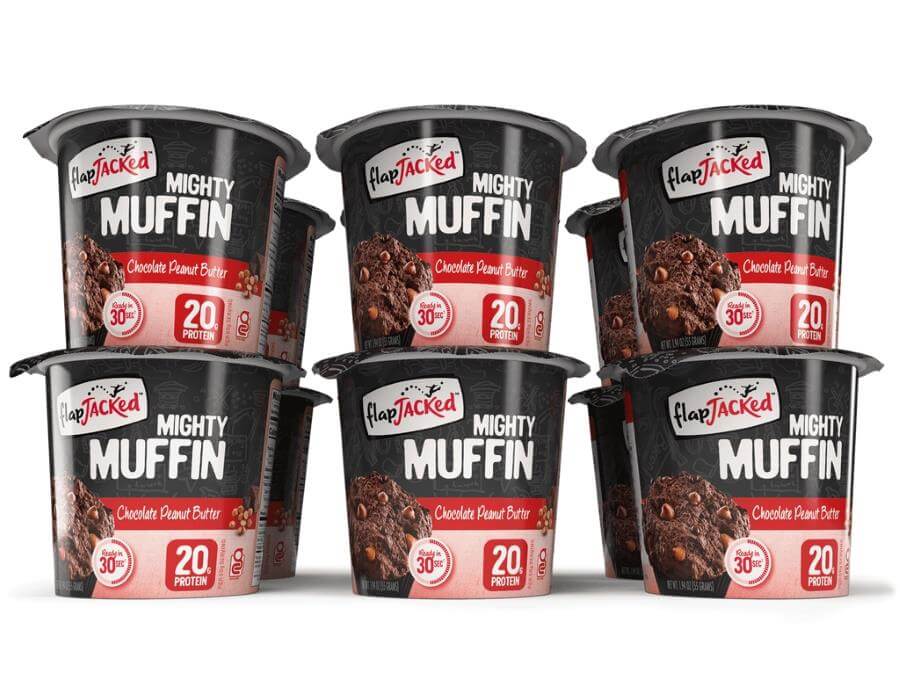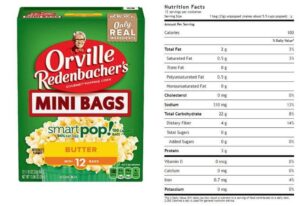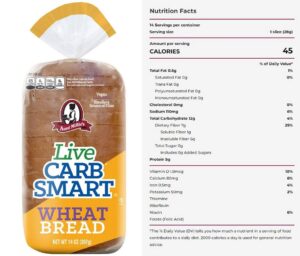8 min read, 1455 words
FlapJacked Mighty Muffins: The Real Deal on These Protein-Packed Snacks
When my client Peggy suggested I try FlapJacked Mighty Muffins, I’ll admit I was skeptical. Another protein product trying to masquerade as real food? We’ve all seen the protein cookie disasters and cardboard-flavored bars that promise the world and deliver disappointment. But Peggy was enthusiastic, and I trust her judgment, so I figured it was worth investigating.
After putting these through their paces (and learning some hard lessons about microwave timing that I’ll save you from repeating), here’s the complete breakdown of what you’re actually getting when you drop three bucks on one of these things.
The Breakdown: What You’re Actually Getting
Let’s start with what FlapJacked is doing right. These aren’t trying to be chicken breast in muffin form – they’re trying to be a better muffin that happens to pack some protein. And in that specific lane, they’ve got some things going for them.
The Good Stuff: Each muffin delivers 20 grams of protein, which honestly isn’t terrible for something you can nuke in under a minute. That’s more protein than most people get in their entire breakfast, and it’s certainly better than the 3-5 grams you’ll find in a typical coffee shop muffin. The convenience factor is real – we’re talking 45-60 seconds in the microwave, and you’ve got something that actually resembles food.
For those dealing with gluten sensitivities, many varieties are certified gluten-free, which opens up options that aren’t always available in the protein snack world. And at around $3 per muffin, you’re looking at roughly the same cost as a decent protein bar, so the economics aren’t crazy.
The Reality Check: Here’s where we need to pump the brakes on the excitement. At 200-240 calories per muffin, you’re only getting 33-40% of your calories from protein. That’s not terrible, but it’s not stellar either – especially when you’re paying a premium for the protein content.
The protein source is where things get interesting, and not always in a good way. Many of these muffins list pea protein as the primary protein source. Now, pea protein isn’t evil, but it’s an incomplete protein on its own, meaning it doesn’t contain all the essential amino acids in optimal ratios. Your body can work with it, especially if you’re eating a varied diet, but it’s not as efficient as whey protein or casein protein for muscle protein synthesis.
Then there’s the sugar situation – 7-10 grams of added sugar per muffin. Not outrageous for a treat, but definitely something to factor into your daily intake. The 5-8 grams of fat from added oils rounds out the macros, but again, we’re talking about processed ingredients, not the fats you’d get from whole food sources.
At the end of the day, this is still a highly processed food. It’s engineered to taste good and provide convenience, which means compromises in ingredient quality and nutritional density compared to whole food options.
My Real-World Test: The Good, The Bad, and The Spongy
Let me tell you about my journey with these things, because the learning curve is real and you might as well benefit from my mistakes.
Attempt #1: The Disaster I grabbed a Cinnamon Roll flavor that had been sitting on my shelf for about 6-8 months (don’t judge, we’ve all got that one shelf). Threw it in the microwave for what I thought was a reasonable 58 seconds. What came out can only be described as a “flavored sponge” – the kind of texture that makes you question your life choices. It wasn’t just bad; it was memorably terrible. I’m talking about something that had the structural integrity of a kitchen sponge with the flavor complexity of artificial cinnamon trying way too hard.
Attempt #2: Redemption Fast forward to a fresh Chocolate Peanut Butter muffin, and I decided to be more conservative with the microwave time – 51 seconds. Those seven seconds made all the difference. This time, I got something that actually resembled cake, had a pleasant texture, and tasted genuinely good. Not “good for a protein product” but actually good. The chocolate and peanut butter flavors came through without that artificial aftertaste that plagues so many protein products.
The lesson here is clear: freshness matters, and microwave timing is absolutely critical. Start with 45-50 seconds and work your way up. Every microwave runs differently, and the difference between perfect and disaster is measured in seconds, not minutes.
When These Actually Make Sense (And When They Don’t)
Here’s where I land on FlapJacked Mighty Muffins, and it might not be what you expect: they’re a “least worst choice” option, not a daily protein strategy. There’s an important distinction there that can save you money and help you make better decisions.
Use these when: You’re genuinely in a time crunch and need something quick that won’t completely sabotage your goals. Think airport layovers, between back-to-back meetings, or those days when meal prep plans go sideways and you’re staring down a vending machine. When the realistic alternative is a 400-calorie bakery muffin with 5 grams of protein and enough sugar to fuel a small aircraft, these start looking pretty reasonable.
They also work well as a post-workout option when you’ve forgotten your usual protein shake or bar and need something immediately available. The combination of protein and carbs isn’t terrible for recovery, even if it’s not optimal.
If you’re someone who struggles with feeling satisfied after protein bars or shakes, the actual food-like experience of eating a warm muffin might help with adherence to your nutrition goals. Sometimes the psychological satisfaction of eating “real food” is worth the slight compromise in macros.
Skip these if: You’re looking at these as a primary protein source for daily nutrition. At 33-40% protein by calories, there are much more efficient ways to hit your protein targets. A serving of Greek yogurt, a couple of eggs, or even a quality protein powder will give you more protein per calorie and per dollar.
Budget is a major consideration – if you’re trying to maximize protein per dollar spent, whole food sources like chicken, eggs, or even protein powder will stretch your money further. At $3 per muffin, you’re paying for convenience and taste, not nutritional efficiency.
If you’re someone who prefers minimally processed foods, these obviously don’t fit that criteria. The ingredient list reads like a food science experiment, which isn’t necessarily bad, but it’s not what everyone wants in their diet.
The Bottom Line: Context is Everything
FlapJacked Mighty Muffins aren’t going to revolutionize your nutrition, and they’re not trying to. What they’re trying to do is occupy that specific space between “I need protein” and “I want something that doesn’t taste like cardboard,” and in that narrow lane, they’re actually pretty successful.
To put this in perspective, let’s compare them to their closest competitor. Kodiak Cakes protein muffins typically deliver 10-12 grams of protein with double the sugar content and 30-50% more fat. So if you’re choosing between protein muffin options, FlapJacked comes out ahead on the macros.
But here’s the thing – just because they’re better than other protein muffins doesn’t mean they’re a good choice for regular consumption. Think of them as a strategic tool for specific situations, not as a dietary staple.
The flavor variety is actually impressive – Double Chocolate, Chocolate Peanut Butter, Cinnamon Roll, Peanut Butter, S’mores, Blueberry, Cinnamon Apple, Lemon Cream, and Banana Chocolate Chip. That’s enough options to keep things interesting if you do decide to incorporate them occasionally.
My Honest Recommendation
Buy one or two flavors that sound appealing and test them out in your own microwave to find your timing sweet spot. If they work for your lifestyle and taste preferences, keep a couple around for those moments when convenience trumps optimization. Just don’t fool yourself into thinking they’re a cornerstone of good nutrition.
The reality is that most of us need foods that bridge the gap between perfect and disaster. FlapJacked Mighty Muffins serve that purpose reasonably well. They’re not the hero of your nutrition story, but they’re a decent supporting character when the script calls for it.
Remember – seconds matter in that microwave, fresh is better than shelf-stable, and these work best when you think of them as a better pivot rather than a primary strategy.
Want more practical nutrition guidance? The key is learning to make better choices in real-world situations, not perfect choices in fantasy land. Sometimes “least worst” is exactly what you need.
– Coach Ken 🚀
What is the glycemic index (GI) used to measure?
Brought to you by your FNN coaches!







